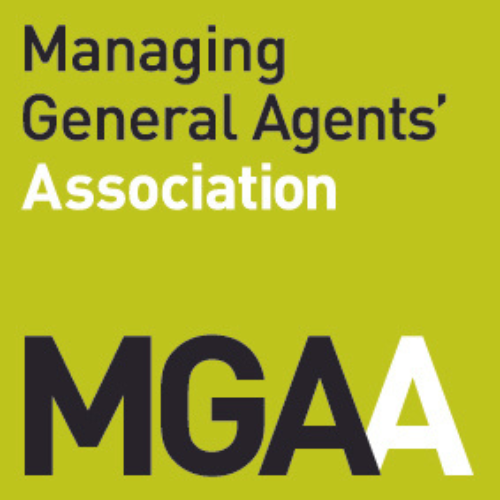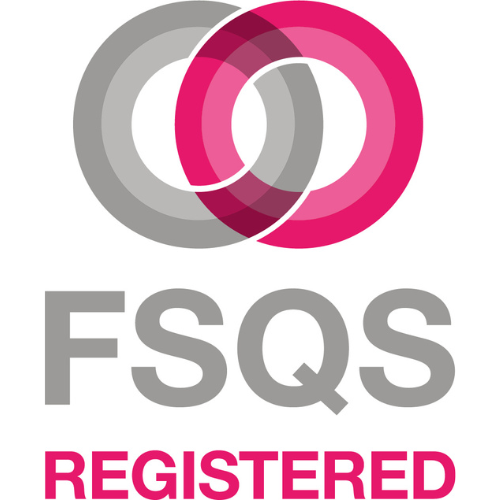Unlike the PRA with dual regulated insurers, the FCA has previously not had a specific approach for the regulation of branches of overseas intermediaries because the only intermediary firms operating in the UK which have not been incorporated here have traded under licenses from the EU utilising Freedom of Service and Freedom of Establishment passports under the EU Insurance Mediation Directive.
Brexit has changed that and with the EIOPA recommendations requiring EU business being placed in the London Market to utilise EU regulated firms throughout the distribution chain a plethora of EU intermediaries including subsidiaries of UK firms have applied to join the TPR and are now requiring authorisation of a UK branch. There are according to the FCA about 1500 firms in this position. That of course does not include those firms who failed to be proactive and thereby failed to be accepted into the TPR in time who have had to find alternative arrangements until their have been fully authorised.
In recognition of this position the FCA have issued a document titled Our Approach to International Firms. It is not a long document, but it is helpful as it provides clarity on their approach and in turn what will be required for applications for full authorisation by setting out their minimum standards. International Firms will need to be able to evidence that they will meet the FCA’s expectations in order to obtain their approval. Importantly the FCA do not consider that their rules require changes, laying a simple foundation which those operating already in the UK will understand.
The Base Position
All firms, whether solo regulated intermediaries or dual regulated insurers must meet the FCA’s minimum standards and must be able to evidence that they have appropriate risk mitigation in place. A significant part of that will involve having an office and resources in the UK. A post box is simply not going to be enough.
The FCA will consider firms proportionately to the risk they pose having regard to their business model, size, the products they distribute and the risks they pose to the FCA meeting its objectives. This requires them to consider not only whether the branch is Fit and Proper, but the role and accountability of its management, the cooperation shows by the Home State regulator of the Firm, potential outcomes in the event of insolvency of the Firm and the FCA’s ability to supervise the branch.
The FCA is only too aware of the issues which arose during the 2008 onwards financial crisis and have learned from the difficulties faced with EU firms trading in the UK under FOS and FOE licenses when many UK policyholders found that they had little or no recourse or rights in the event of a failure by a firm because the insolvency laws which applied were those of the Home State. Those problems clearly drive the thinking of the FCA. At that point the FCA could do little because the EU rules provided poor scope for action. The UK is now out of the EU and the FCA is under the microscope for its handling of the recent LCF scandal. We can therefore expect that scrutiny by the FCA on applications will be thorough and the height of the bar set by the minimum standards will be high. The FCA cannot afford to get this wrong.
Whether because many of the firms in the TPR are subsidiaries of UK based firms will lead to an unbalanced playing field remains to be seen. Clearly however, a UK based firm applying for authorisation of a UK branch of its EU subsidiary should have an advantage and be able to evidence that it meets the threshold conditions with its higher level of resources and availability of individuals who can be held accountable than those firms which are EU based and where less of the resources and less of the individuals may be accessible to the FCA.
Assessment Process
The FCA utilises three sources of information to determine an application:
- Market Intelligence;
- Information provided by the Firm; and
- FCA intelligence, which may include information from the Firm’s home state regulator or other sources such as its own research which may include simple google research on the individuals involved with the Firms and a review of their websites.
A Firm needs to demonstrate that it is ready to be regulated, it is willing to be regulated and that it is organised. If it achieves these and it meets the minimum standards it will be approved. To meet these requirements the FCA will assess the firm against its’ expectations having regard to:
- The nature of the firm’s operations;
- The firm’s personnel and decision-making;
- The firm’s systems and controls; and
- The factors relating to the Home State of the Firm.
We will look at each of these in this article.
The determination by the FCA may lead to one of three outcomes:
- Approval;
- Approval with limitations o requirements; or
- Refusal.
Limitations and requirements will directly relate to risks posed by the firm, are designed to reduce the risk posed by the firm and may include for example:
- restrictions on regulatory activities;
- size of business;
- nature of business or products;
- capital or other requirements for the protection of local policyholders.
The Minimum Standards and the Risks
International firms which do not have a subsidiary in the UK are expected to have physical presence in the UK, a Branch. However, it is important to understand that while authorisation may be sought by a firm trading in the UK using a branch it is not the branch which is authorised by the FCA, but the entire legal entity based in whichever country that legal entity is domiciled in or has its head office.
This is core to understanding the approach of the FCA because the risk faced by breaches or a failure by the firm are greater when the firm is based offshore than when it is incorporated in the UK for several reasons. These include:
- It can be more difficult for the FCA to enforce its rules and/or protect policyholders and/or the market;
- The FCA rules may differ to those of the firm’s home state regulators causing a conflict of interest; and
- In the event of failure of the firm, the home state rules for the protection of creditors may differ to those in the UK and may lead to UK policyholder detriment.
Firms are therefore required to be able to evidence in their application that these risks are appropriately mitigated. The mitigation required will be dependent on the circumstances and be individual to each firm depending on size, nature of the business model, nature of the products distributed and the client categorisation. The FCA has categorised the key harms as follows:
- Retail Harm: Where customers are retail customers the FCA considers it may be more difficult to evidence that the harm is adequately mitigated. The issue here is about ensuring that redress is available for UK policyholders where harm has occurred even though the firm is subject to the UK rules on redress and the policyholders protected by the FSCS.
- Client Assets Harm: Where the firm’s UK Branch will be holding client assets, in the case of brokers that is client monies, the mitigation measures may depend on how Home State laws treat client monies safeguarded under the UK rules. The Branch will be required to comply with the UK rules on client monies but in the event of an insolvency it may be the Home State solvency rules which apply to those funds and questions will arise to whether the UK protections will apply.
- Wholesale Harm: Where firms provide services to wholesale clients the risk is considered lower unless there is the propensity to have an impact on the wider market integrity, which is likely to be an issue for larger firms only. Factors which might increase the risks include whether there are substitutable products, whether the firm occupies a significant market share in a niche product or a significant influence due to size, and whether the firms is interconnected with other firms in the industry which could result in a spread or amplification of the risk.
In each case the FCA will look at how the Home State regulator deals with the issue including the level of cooperation the FCA has with the Home State and other factors including the firms’ recovery and winding down plans, business model, personnel and systems and controls all commensurate with the level of risk posed by the firm.
This will present issues for UK firms which have a small EU entity set up for Brexit and their main operations based in the UK. These firms will be applying for a UK license in order for their EU company to trade in the UK. Like other EU firms following the same structure they will still be required to evidence that their EU based legal entity has the right level of resources and overall controls in the Home State of the EU entity applying for authorisation. The fact that their UK operations are well developed and organised is not an answer to the questions the FCA will ask about the business and operations of the EU firm which is making the application.
However, the issues can be significantly reduced by UK based groups and EU firms seeking access to the UK market (including EU insurers trading in the UK) by simply ensuring that the UK branches of their EU firms are only involved in EU business. That is business on behalf of EU policyholders. In these circumstances the FCA’s prime concern will be about the impact of a failure of the firm on the UK market as a whole. That is not to say that the FCA will not have concerns about other policyholders but as they are EU based it will rightly expect the Home State regulator to be responsible for ensuring their protection.
EU firms applying for authorisation for a branch in the UK in order to provide products to UK customers will however face higher scrutiny by the FCA because of the obligation of the FCA to protect UK Policyholders and the issues presented by the conflict of laws between the UK and Home State policyholder protection laws and regulations and those applicable to insolvency of the relevant firms. One way to seek to ensure the risk is mitigated for these firms will be to obtain risk transfer from insurers so that all premiums they receive are help by them on behalf of the insurers. In ordinary circumstances this would mean that the risk to policyholders in the event of solvency is reduced but for this mitigation to apply there must be evidence that on any insolvency of the firm the laws of the Home State would recognise the legal position in relation to the transfer of ownership of those client assets, (the premiums and claims monies) according to English law.
Mitigations Identified by the FCA
For each of the risks it identifies the FCA also identifies a series of mitigations. For the retail and client asset risks identified by the FCA there are significant overlaps. These include:
- Good UK based governance for the UK branch;
- Systems and controls in the UK which ensure appropriate levels of protection for policyholders: for client assets this may include utilising a UK firm to hold client assets for them and having EU policyholders assets held by the Firm in the Home State;
- UK based SMF’s with UK experience;
- Processes to ensure that products and services are suitable for the UK market; and
- Localisation of compliance and other policies to meet UK requirements.
These mitigations are generalised, but they are areas which the FCA will be looking at. Any additional risks specific to the individual firm will be considered as well and the firm will be required to evidence its mitigation of those risks. So, for example, an EU firm operating a telesales business model in the UK is going to need to evidence how it mitigated the risks inherent in a telesales business model.
Summary
A firm seeking authorisation in the UK for a branch of its’ EU authorised must evidence to the FCA that it should be authorised, and the process will be no less strenuous for subsidiaries of UK based groups. Each application will depend on the circumstances and the FCA will look closely at the nature of the operations, their size, the products being distributed and to which clients including where they are situated as well as the business model of the firm to determine the application having regard to the risks we have discussed above.
There are also ways to mitigate issues of particular concern to the FCA which will assist a firm making an application.
If you would like to know more about any aspect of the FCA approach to the authorisation of International Firms, please do contact us. ICSR is available to assist firms in understanding the authorisation process and with the process of making authorisation applications.
Kenneth Underhill
Director
Implement Compliance Solutions & Resources
On 11th May at 11am, we will be hosting a webinar looking at the FCA approach to regulating International Firms. The webinar will be of relevance to solo regulated firms looking to secure direct authorisation as an International Firm from the FCA, or firms currently in the Temporary Permissions Regime looking to transition to full authorisation. Register now to join us. All registered attendees will be sent a copy of the recording afterwards.
Computers4Schools
ICSR is supporting the Insurance Community initiative 'Computers4Schools'. Find out more about the way you and your organisation can support this by watching this video narrated by Huw Evans, Director General of the ABI.










